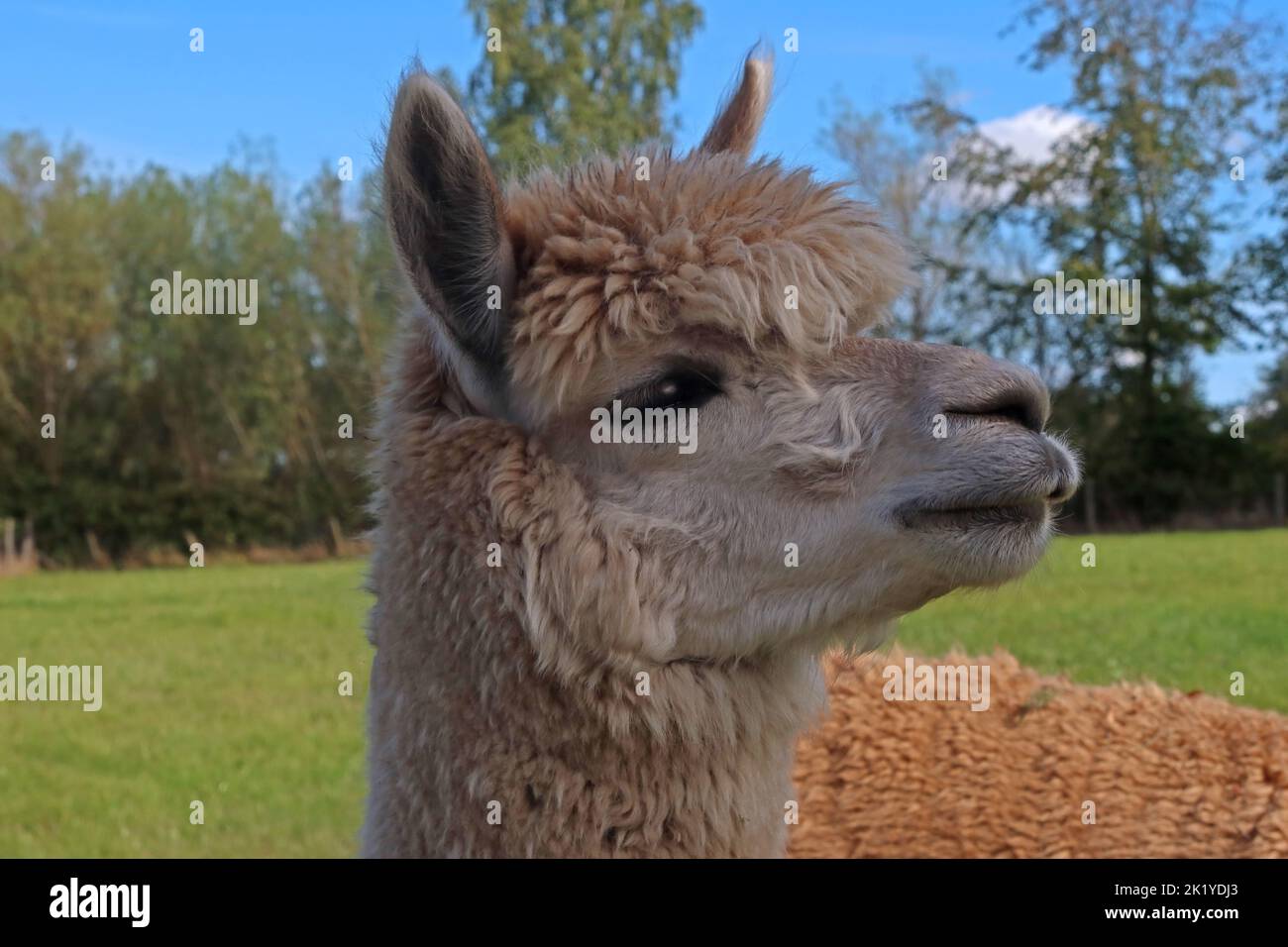Alpaca farming an interesting alternative enterprise, at Woodlands Alpaca Farm, Stockport Rd, Thelwall, Warrington, Cheshire, England, UK, WA4 2TB

Image details
Contributor:
Tony Smith / Alamy Stock PhotoImage ID:
2K1YDJ3File size:
57.1 MB (1.4 MB Compressed download)Releases:
Model - no | Property - noDo I need a release?Dimensions:
5472 x 3648 px | 46.3 x 30.9 cm | 18.2 x 12.2 inches | 300dpiDate taken:
17 September 2022Location:
Woodlands Alpaca Farm, Stockport Rd, Thelwall, Warrington, Cheshire, England, UK, WA4 2TBMore information:
Alpaca farming has rapidly become one of the most successful and respected alternative farming enterprises in the agricultural sector. Alpacas can provide healthy financial returns, a breeding challenge and a wonderful lifestyle The alpaca (Lama pacos) is a species of South American camelid mammal. It is similar to, and often confused with, the llama. However, alpacas are often noticeably smaller than llamas. The two animals are closely related and can successfully crossbreed. Both species are believed to have been domesticated from their wild relatives, the vicuña and guanaco. There are two breeds of alpaca: the Suri alpaca and the Huacaya alpaca. Alpacas are kept in herds that graze on the level heights of the Andes of Southern Peru, Western Bolivia, Ecuador, and Northern Chile at an altitude of 3, 500 to 5, 000 metres (11, 000 to 16, 000 feet) above sea level. Alpacas are considerably smaller than llamas, and unlike llamas, they were not bred to be working animals, but were bred specifically for their fiber. Alpaca fiber is used for making knitted and woven items, similar to sheep's wool. These items include blankets, sweaters, hats, gloves, scarves, a wide variety of textiles, and ponchos, in South America, as well as sweaters, socks, coats, and bedding in other parts of the world. The fiber comes in more than 52 natural colors as classified in Peru, 12 as classified in Australia, and 16 as classified in the United States. Alpacas communicate through body language. The most common is spitting to show dominance when they are in distress, fearful, or feel agitated. Male alpacas are more aggressive than females, and tend to establish dominance within their herd group. In some cases, alpha males will immobilize the head and neck of a weaker or challenging male in order to show their strength and dominance